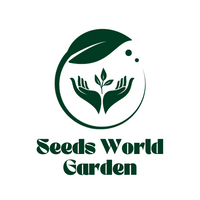Quantity: 100+ Seeds
Color: As picture
Free Shipping and Buy 2 Get 1 Free
1. Begonia is a large genus of flowering plants that includes about 1,500 species of perennial shrubs and herbs. It is native to tropical and subtropical regions of the world, with most species occurring in Central and South America. The flowers of Begonia are usually white, pink, or red in color and have five petals. The leaves of Begonia are often large, fleshy, and serrated, with many colors and patterns.
2. Grains are the edible seeds of a plant, usually from the grass family. They are an important source of nutrition and can be used in a variety of dishes. Common grains include wheat, oats, barley, rice, and maize. Grains are typically milled and processed before they are sold to consumers. They are also used as feed for livestock, and for making beer and other alcoholic beverages.
3. Grains are typically high in carbohydrates, providing energy to the body. They are also a good source of dietary fiber and contain some proteins, vitamins, and minerals. Whole grains provide the most nutrition, as they contain all the vital elements that are necessary for human health. Grains provide essential nutrients such as iron, zinc, and B vitamins.
4. Grains are often used in baking and cooking. They can be used to make breads, cereals, and pastas, as well as porridge and other dishes. Grains can also be boiled and eaten as a side dish or used in soups and stews. Grains are also used to make beer, whisky, and other alcoholic beverages.
5. Begonia and grains are both important sources of nutrition and can be used in a variety of dishes. Both are versatile and can be used in a variety of recipes. Begonia can be grown in gardens and pots, and its flowers provide a wonderful splash of color and fragrance. Grains provide essential nutrients, and can be used to make breads, cereals, and other dishes. Both Begonia and grains are great additions to any garden or kitchen.
How to Grow Your :
1. Soak in water for 24 to 48 hours before you t them. This allows moisture to penetrate the coat and leads to swelling of the ’s parts to spur germination.
2. Find a location with well-drained, organic-rich, sandy or silt loam and with a minimum average temperature of about 60 degrees Fahrenheit during the t’s early growth. The most favorable temperature range is between 75 to 80 degrees. The t should ideally receive six hours of sun per.
3. Till the soil to rid it of weeds and to increase air circulation. Apply compost to the soil after tilling.
4. Place two or three in a hole about ½ to 1 inch deep in the soil along a fence or under a 6-foot-tall trellis form. The holes should be 15 to 23 inches apart and rows 3 to 5 feet apart.You can also start in small plastic pots in a commercial soil mix.
Shipping:
All orders Free Shipping and Buy 2 Get 1 Free. Normally North American delivery time will take 7-14 days (shipping delays due to large orders will add 1-3 weeks depending on time). Other areas please wait 14-28 days for the order to arrive.
RETURN POLICY
We have a 30-day return policy, which means you have 30 days after receiving your item to request a return.


